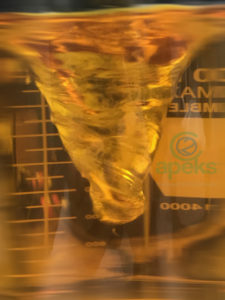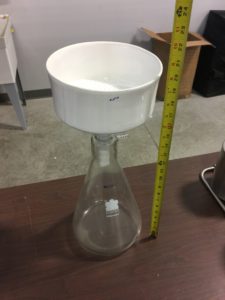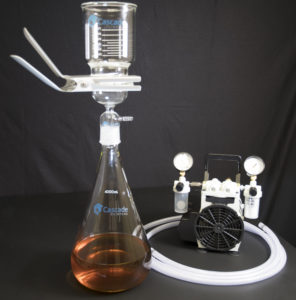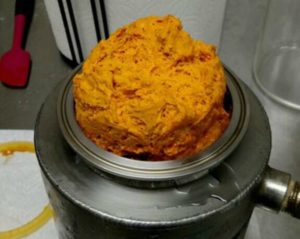How To Extract CBD – The Extraction Process & How CBD Oil Is Made
How To Extract CBD – The Extraction Process & How CBD Oil Is Made
CBD (Cannabidiol) is a compound that has shown promise in a variety of medical applications, from pain relief to relieving anxiety, and many other ailments in between. A major benefit to CBD is that it doesn’t contain THC, which is the compound that makes users high, so this makes CBD an ideal medication for children. Below you will find a step by step outline of how cbd oil is made.
Extract CBD Oil From Cannabis Or Hemp
There are many ways to extract the oil from the plant and make cbd oil. Apeks Supercritical systems use CO2 as a solvent to extract the oil. The solvent is considered a cleaner, purer form of extraction because there is no residue after extraction.
To isolate the individual compounds (CBD being one of them), the extracted oil needs to be distilled after extraction. The first step is a process called Winterization, followed by Short Path Distillation.
Winterization

Mixing oil and alcohol prior to freezing

Winterization is the process to remove undesirable elements that were extracted from the plant, for example fats, waxes and lipids. This process is only needed when the oil was extracted at high pressure/high temperature (supercritical) because this intense extraction pulls everything from the plant, including material you don’t want in the final product. The extracted oil is effectively crude oil, which needs refining.
Once extracted, the mixture is combined with 200 proof alcohol and stirred vigorously until completely mixed. It’s then placed in a deep freezer overnight. In the morning, the mixture looks cloudy and is ready for filtration. One way to filter out the fats, etc. is to run it through a filter paper into an extraction jar. A common piece of equipment for this is a Buchner Funnel. Once it’s been filtered to satisfaction and the undesirable elements have been removed, it’s time to remove the alcohol. This is done using heat. The extraction is warmed and as its warmed, the alcohol evaporates since the boiling point of alcohol is lower than the oil. The removed alcohol can then be reused on a different batch of crude oil.
Short Path Distillation
To further refine the extract, and to isolate the CBD, the oil goes through Short Path Distillation. This works in much the same way as Winterization in that the extract is heated and each compound is then separated because each one has a different boiling point. In this way, each compound is isolated and can be used by itself.

Short path distillation equipment
Benefits And Uses Of CBD
Research is showing that CBD has a huge potential in the medical market. It eases symptoms of anxiety, reduces pain and inflammation, helps prevent seizures, and many more. Because it’s a natural extract, there are few, if any, side effects. The extract works with the body’s endocannabinoid system, which is the system’s method of regulating processes, like pain, mood, appetite, and memory. CBD works with the natural system rather than being an unnatural substance, so the body doesn’t try to reject it. This is why it has powerful medical benefits.
The Entourage Effect
Despite the benefits of CBD as an isolate, there is much to be said for providing patients with all the compounds in the plant, not as separate isolates. Patients can still use the oil without getting high, as long as the THCa has not been heated, which converts it into THC, which is what makes you high. The Entourage Effect is the effect that all the compounds of the plant have on the body, as a whole.
Hemp And Cannabis Oil Extraction Processes And Techniques
Andy is on a panel of experts, answering questions from the community. We compiled a collection of questions and answers below, about hemp and cannabis oil extraction processes and techniques.
Click to read more on the CBD Extraction Process.
What Are The Safest And The Most Effective Ways To Extract And Produce CBD-Rich Cannabis Oil? Co2 , Oil Or Ethanol?
Question:
What are the safest and the most effective ways to extract and produce CBD-rich oil? CO2 , OIL OR ETHANOL?
Answer:
Thanks for the great question! There are really 2 questions here, so I’ll try to answer them separately.
First question: What are the safest ways to extract? When it comes to extraction, safety is an important issue and has multiple areas to consider. The list below represents some of the major areas that need to be addressed with the popular solvents being used in the cannabis industry today:
- Design – The extraction equipment needs to be designed to handle the solvent being used
- Materials of Construction- Stainless steel materials for food/consumed oil applications
- Electrical for Flammable Solvents – Class 1, Division 1 (explosion proof) electrical components for compressed flammable gasses, Class 1, Division 2 for ethanol/alcohol
- Electrical, Non Flammable Solvents – NEMA 4x wash down electrical enclosures
- Pressure Rating – usually 300 psi for hydrocarbons, 2000 or 5000psi for CO2.
- Overpressure Protection – non-isolable relief valves set to 110% of maximum allowable working pressure
- Purpose – The equipment needs to be constructed for its intended use
- Food grade – welds in contact with extracted material should be ground flush and polished
- Accessibility for Cleaning – vessels and piping should be accessible from both ends to allow proper cleaning
- Storage tanks – should be stainless steel to prevent corrosion
- Facility – In addition to the equipment considerations, the facility must also be appropriate for the extraction solvent
- Compressed Flammable Gasses – Class 1, Division 1 facility. This includes electrical fixtures, and also monitoring and evacuation equipment in the event there is a release of flammable gas into the area around the equipment.
- Ethanol/Alcohol – vent hood or equivalent walk in vent area
- CO2 – asphyxiation hazard. Monitoring and audible alarm to warn of leaks.
- Human Consumption – The solvent should be safe for consumption by humans
- CO2 – Generally Regarded as Safe (GRAS) by the FDA for consumption
- Compressed gas – GRAS for use as a propellant, states differ on safe residual solvent levels
- Ethanol – GRAS for food products, states differ on safe residual solvent levels
So the answer to the question about safety really doesn’t have anything to do with the solvent, rather the equipment chosen and the facility where the extraction is performed determine safety. The solvents commonly used in extractions today all have pros and cons, and all can be operated safely as long as proper guidelines and regulations are followed.

I addressed the safety question in the first part of the answer, in the second part I’ll address the efficiency question: What is the most effective way to extract CBD-rich oil?
A major problem facing the cannabis industry today is a lack of commonly accepted standards – as evidenced by the question referring to “CBD-rich”. Does “CBD-rich” mean 40% CBD? 99% CBD? And CBD in what form, CBD, CBD-A or some combination? There are groups that are working towards creating standards, such as FOCUS and ASTM, but they have not been widely accepted yet. Without standards, quality becomes difficult to determine because the only standard is personal subjectivity.
That being said, there are some generalizations about extraction methods that can be made. Keep in mind – every extraction method has pros and cons. Each method will shine in certain applications, and perform poorly in other. No method is great at everything.
- CO2 Pros
- Selective and tunable for different molecular weights
- No residual solvents – great for vape pens
- Cold extractions and separations are good for temperature sensitive extractions (i.e. terpene preservation)
- Minimal facility safety requirements/costs – just signs and CO2 monitor
- Automation is easy and available
- CO2 Cons
- Equipment is expensive
- Manually operated systems are complex to learn
- Extraction rates are slow on less expensive equipment (competitive rates for more expensive equipment)
- Hydrocarbon Pros
- Less expensive equipment than CO2
- Fast extraction rates
- Great for dabbable products like shatter, honeycomb, crumble
- High potency levels
- Hydrocarbon Cons
- Facility is very expensive – Class 1, Division 1 requirements
- Automation is difficult and expensive due to C1D1 requirement
- Heavily scrutinized by local regulators and inspectors
- Not selective or tunable
- Scaling challenges from limits on amount of hydrocarbon that can be on site (150#)
- Residual solvent testing required (adds additional time and expense)
- Ethanol Pros
- Very inexpensive equipment
- Facility is less expensive than hydrocarbons
- Less power intensive than CO2
- Very fast extractions – great for distillate products
- Easily scalable
- Ethanol Cons
- Not selective or tunable
- Will freely extract chlorophyll
- Requires significant levels of secondary processing
- Flammable – requires fume hood or equivalent
